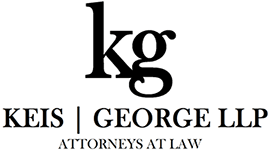Disputed liability and the admissibility of police reports
Most automobile accidents that end up in litigation are disputed liability. Disputed liability is a legal dispute where there is a disagreement or controversy regarding who is at fault or responsible for causing an incident. It typically arises in cases where there are conflicting accounts of the events or differing interpretations of the applicable laws. For example, the admissibility of police reports in automobile accidents.
In a disputed liability case, the parties involved, such as the plaintiff (i.e., the injured party or the one seeking damages) and the defendant (i.e., the alleged wrongdoer), hold opposing views on the issue of fault. Each party may present their own version of the facts, provide evidence, and argue their case to support their position. The resolution of disputed liability often involves a thorough investigation, gathering of evidence, witness testimonies, and legal arguments presented in court. The court or a jury will evaluate the evidence and arguments presented by both sides to determine the liability and apportion fault accordingly.
Example of disputed liability in auto accidents
In car accidents where disputed liability may arise, these cases sound like this: the subrogated carrier’s insured is adamant that he had the green light; or, the other driver defendant is adamant the insured merged into his/her lane. Of course, the other driver defendant disputes the insured’s account and states the complete opposite. This is a regular occurrence. Both drivers cannot be correct. What do you typically do? You look to see if a police report was prepared.
The police report
You get the police report and to your delight, you see the investigating police officer determined the defendant driver was at fault and cited him/her. The investigating police officer interviewed each driver and determined the defendant driver merged into the insured’s lane. The investigating officer cites the defendant driver with failure to operate his/her vehicle in the marked lanes. The subrogated carrier believes they have the “smoking gun” to prevail. Unfortunately, the citation in the police report is a red herring and is not admissible. Unless, of course, the defendant driver pleads guilty or is found guilty after a trial. For sake of this article, the defendant driver pleads no contest.
The admissibility of police reports
Under Ohio law, a police report is hearsay (in other words inadmissible) unless it meets one of the exceptions enumerated in the rules of evidence. First hand observations of the investigating officer making the report fall within the public records exception to the hearsay rule and are admissible. Hearsay statements contained in the police report that do not have independent sources of admissibility are inadmissible. Therefore, the citation and any comments or information included in the police report is inadmissible unless there is an independent source of admissibility. Thus, the subrogated carrier must assess the credibility of the insured driver and defendant driver when assessing liability and facts of the case. In most instances, the correct facts of how the accident took place is somewhere between both versions.
Auto litigation
Insurance carriers must refrain from relying entirely on the information found in the police report and the citation. The police officer did not see the accident and can only go off what he is told from the drivers and witnesses. To discuss the admissibility of evidence, police reports, and dispute liability, contact a litigation attorney from our subrogation practice.
